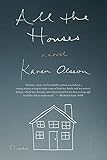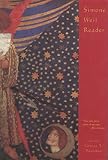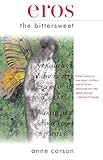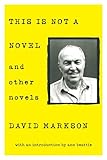When novelist Karen Olsson was in high school in Washington, D.C., she checked The Simone Weil Reader out of the library and became obsessed by the French iconic thinker and activist. Later, after studying higher mathematics at Harvard and going on to become a writer, Olsson still found herself enthralled with the thoughts, ideas, and life of Simone Weil, as well as her older brother, André. In her third book, The Weil Conjectures, Olsson weaves together her fascination with the famous siblings and how her undergraduate studies in math eventually gave way to her own writing life. For math-minded and non-math-minded readers alike, Olsson presents a compelling series of questions about the brilliant siblings, and how math can shape and inspire one’s life.

 Olsson—author of Waterloo (2005) and All the Houses (2015)—also has worked as a journalist and editor; her long-form articles have been published in The New York Times Magazine and Texas Monthly, and she is a former editor of The Texas Observer. Not surprisingly, Olsson’s journalistic curiosity melds perfectly with her novelistic precision for detail and language in this genre-defying book. Reminiscent of Jenny Offil’s The Department of Speculation, The Weil Conjectures offers a thought provoking portrait-in-pieces of what it means to be a writer and tell stories.
Olsson—author of Waterloo (2005) and All the Houses (2015)—also has worked as a journalist and editor; her long-form articles have been published in The New York Times Magazine and Texas Monthly, and she is a former editor of The Texas Observer. Not surprisingly, Olsson’s journalistic curiosity melds perfectly with her novelistic precision for detail and language in this genre-defying book. Reminiscent of Jenny Offil’s The Department of Speculation, The Weil Conjectures offers a thought provoking portrait-in-pieces of what it means to be a writer and tell stories.
The Millions talked with Olsson via email about her preoccupation with the Weil siblings, mathematics, and the daily struggles at the desk.
The Millions: What drew you to write about André and Simone Weil?
Karen Olsson: I was fascinated by Simone Weil in high school: I was interested in the lives of brainy women, and here was this exotic, brilliant French intellectual in wire-rimmed glasses who could never really be a role model for a 1980s teenager in Washington, D.C.—yet I still found her inspiring in her integrity and purity. It was later that I realized her brother was a mathematician, another remarkable mind. Just the existence of these genius siblings is compelling in itself, but because one was a female public intellectual and one was a mathematician, they embody fascinations I had when I was younger, ones I could revisit through them.
 TM: In reading and writing about Simone Weil for this book, did you gain further insight into your attraction to Simone—and her ideas and what she represented—when you were a teenager and first read The Simone Weil Reader?
TM: In reading and writing about Simone Weil for this book, did you gain further insight into your attraction to Simone—and her ideas and what she represented—when you were a teenager and first read The Simone Weil Reader?
KO: My early interest in Simone Weil was relatively superficial—I paid less attention to her work than to her biography. I was drawn to the figure of Simone Weil, to the saintly ghost of Simone Weil, who represented something like absolute attention, a pure life of the mind all but divorced from the body. So when I went back and read more about her and more of her writing, I didn’t see my youthful interest differently; I saw her differently. In particular, I saw how influenced she was by her brother the mathematician, how math informs her thinking. She also seems more eccentric, more self-punishing—it’s tempting to see her as crazy, because some of what she did seems nuts, but then again that seems to me a shortcut, avoiding the difficulty she presents. At times she’s been portrayed as crazy or as a kind of saint because she was living in a different register than the rest of us do. To the extent that her way of living demanded more discipline, more attention and engagement than most of us are in the habit of, we could all take a cue from her. But some of her ideas were quite extreme.
TM: How old were you when you discovered that you had “a head for numbers?” Did numbers and language always intermingle for you? Or was it only after college that you begin to understand the intersections?
KO: I wasn’t exceptionally talented in math, but I always liked it, and in junior high—we did a lot of rudimentary geometry in seventh grade and algebra in eighth grade—I realized that it came quickly to me. As the math on offer started to get more abstract, I started to like it more. Meanwhile I had a few teachers who commended my writing or told me I was a writer, and I took their word for it. Sometimes I wonder what would’ve happened if the praise had been more directed to my math side—I think I was pretty susceptible to that kind of encouragement.
TM: How was the writing of this book different from your first two novels (Waterloo and All the Houses)?
KO: I had more fun writing this book than writing a novel. I loved reading and thinking about math after so many years away, and I loved not having to tend to all the narrative machinery of a novel. There’s a way in which a novelist is a kind of beleaguered manager who has to deal with dissatisfied subordinates and equipment that’s not working and low inventory. This book gave me fewer headaches.
TM: Could you talk about the structure of The Weil Conjectures? Was it difficult to determine how the sections would answer each other? Or did it flow in an organic sort of a way as you began to write and revise the narrative?
KO: Because I wrote the book in fragments, and because I wanted to braid together certain subjects and themes, the structure arose naturally as I went along. Once I had a draft I started shifting pieces around, but the book didn’t change radically from one draft to the next.
TM: How do writing and mathematics inform each other in your own creative process now?
KO: For me the words “creative process” suggest something more sophisticated and effective than what actually goes down at my desk—and I wouldn’t say, in general, that those struggles at the desk are informed by math—but I think having studied math influenced me. Math can be difficult (that damn Barbie doll was right!) and I think when you spend time learning math or physics or philosophy or anything complex, you gain confidence that you can learn other difficult things, and that it’s worth trying to solve complicated problems. Also, for writers it can be tempting to let yourself be carried away by some nice-sounding turn of phrase, and while having studied math doesn’t make you immune to that, I do think it can make you more rigorous in your thinking. Then again I’ve wondered sometimes whether rigor is an unalloyed good for a writer, since sometimes it pays off artistically to be fanciful, to spin out notions that wouldn’t necessarily hold up in the face of logical analysis.
TM: Could you talk about how Anne Carson and David Markson inspired The Weil Conjectures? In a recent essay for Granta, you mentioned both of these inventive authors as varying influences for this narrative?


 KO: It seems as if there are an increasing number of books now that mash up genres, works that combine elements of essay and memoir and historical narrative. There’s not really a name for this hybrid creature, though I’ve seen the term “lyric essay” used sometimes, in particular when the author is a poet, and Anne Carson is certainly one torchbearer when it comes to books in this vein. I wasn’t thinking of her directly when it came to figuring out the form of my book, but I was thinking about her ideas about the erotics of knowledge in Eros the Bittersweet. (I didn’t realize until after I’d finished the book that Carson wrote about Simone Weil in her book Decreation.) David Markson’s This Is Not a Novel was lurking in the back of my mind as I wrote, but it’s hard for me to articulate the way in which it was hovering—it’s as though there was a voice muttering things I couldn’t quite make out, and that voice was the voice of Markson’s book.
KO: It seems as if there are an increasing number of books now that mash up genres, works that combine elements of essay and memoir and historical narrative. There’s not really a name for this hybrid creature, though I’ve seen the term “lyric essay” used sometimes, in particular when the author is a poet, and Anne Carson is certainly one torchbearer when it comes to books in this vein. I wasn’t thinking of her directly when it came to figuring out the form of my book, but I was thinking about her ideas about the erotics of knowledge in Eros the Bittersweet. (I didn’t realize until after I’d finished the book that Carson wrote about Simone Weil in her book Decreation.) David Markson’s This Is Not a Novel was lurking in the back of my mind as I wrote, but it’s hard for me to articulate the way in which it was hovering—it’s as though there was a voice muttering things I couldn’t quite make out, and that voice was the voice of Markson’s book.
TM: In the Granta essay, you discussed how this hybrid form is a reflection of the Internet era, and how many readers are digesting different kinds of reading in fragmented ways but with hopes of gathering meaning. Could you expand on this?
KO: To the extent that the hybrid/collage assembled from short sections is becoming more popular, I think it reflects the way we read online—a little bit here, then jumping over there, and then on to the next thing—but at the same time makes that experience more satisfying, because there is an underlying design, and the sections are cumulative and reflective. Also there are no ads.
TM: Did you find it more challenging to find time to make the necessary deep dives into reading?
KO: It’s always challenging to make time to read, and when I look back I’m surprised I managed to read as much as I did and at the same time feel bad that I didn’t read much more, since there is always more.
TM: What did you think are the most common misconceptions about higher mathematics and the study of this subject area?
KO: There’s an image in our culture of the great mathematician as a lone (male) genius who is at a minimum autistic and/or very eccentric, or else mentally ill or a hermit—people at the edge of or outside of human society. And that’s an image that serves to reinforce an idea a lot of non-mathematicians have about math, i.e. that it is an occult subject that they’re not equipped to understand, because the people who understand it are crazy geniuses who aren’t like the rest of us. Any field will have its share of unstable or eccentric people, but many great mathematicians live conventional, community-minded lives.
TM: What book would you recommend to a reader who is interested in learning more about higher mathematics (without becoming too overwhelmed)?
 KO: One that I like a lot is Remarkable Mathematicians: From Euler to von Neumann, by Ioan James, which is a series of 60 engaging short biographies of mathematicians, which need not be read in order—it’s a book you can dip in and out of. And How Not to Be Wrong: The Power of Mathematical Thinking, by Jordan Ellenberg, is the book equivalent of taking a class from a really great teacher, who drops all sorts of funny asides and draws excellent cartoons on the board while explaining why math matters to the world around us.
KO: One that I like a lot is Remarkable Mathematicians: From Euler to von Neumann, by Ioan James, which is a series of 60 engaging short biographies of mathematicians, which need not be read in order—it’s a book you can dip in and out of. And How Not to Be Wrong: The Power of Mathematical Thinking, by Jordan Ellenberg, is the book equivalent of taking a class from a really great teacher, who drops all sorts of funny asides and draws excellent cartoons on the board while explaining why math matters to the world around us.









